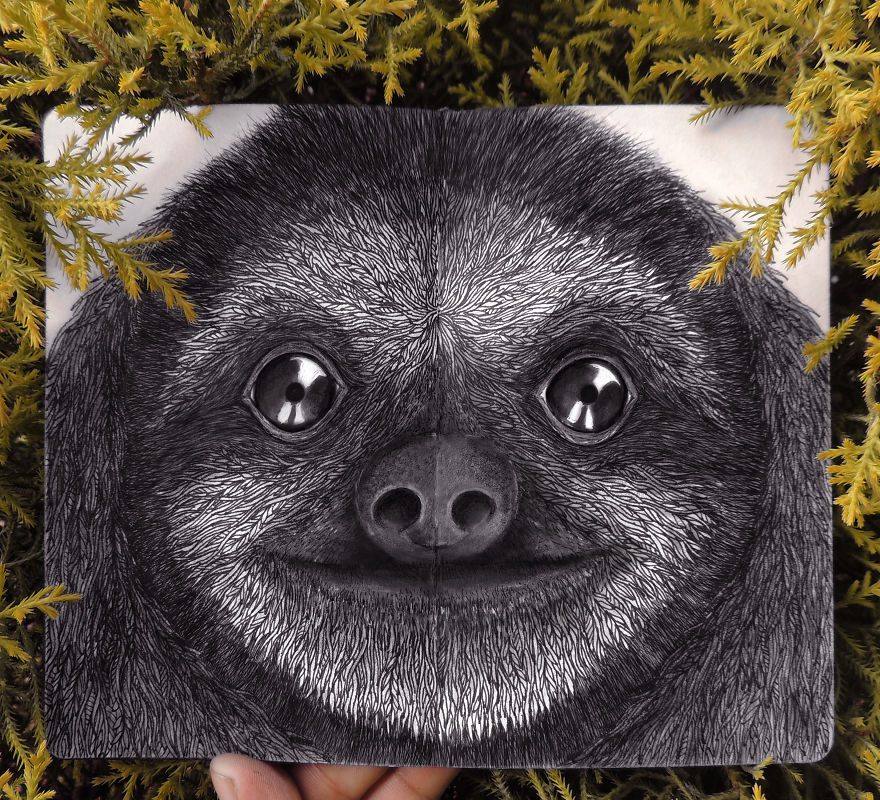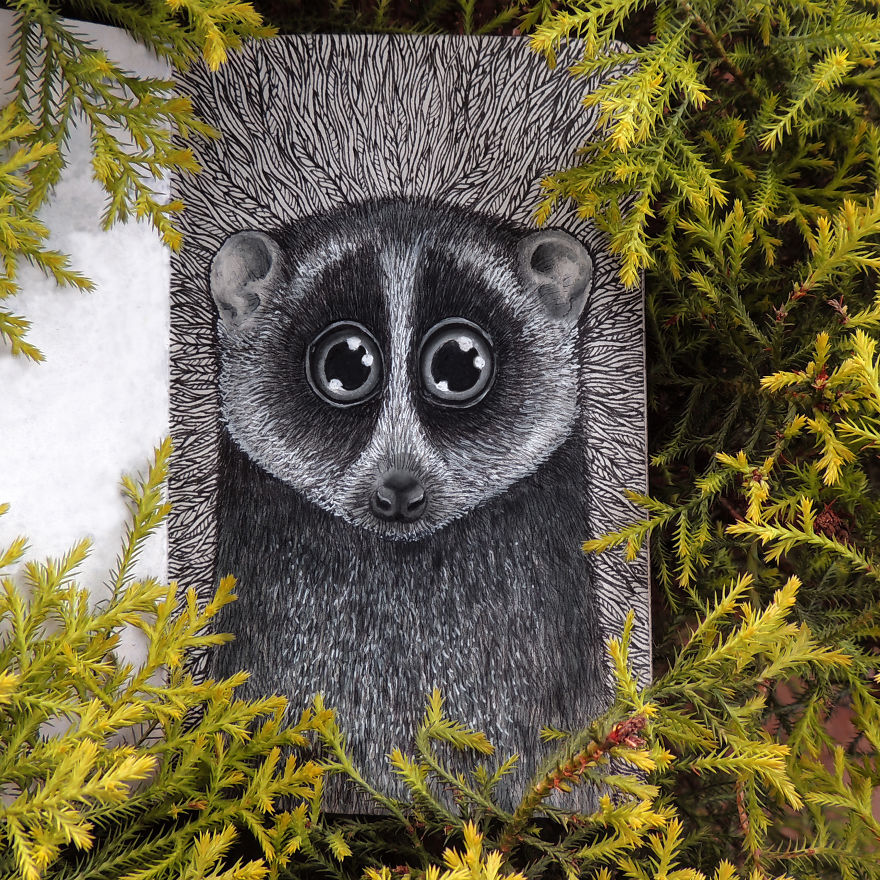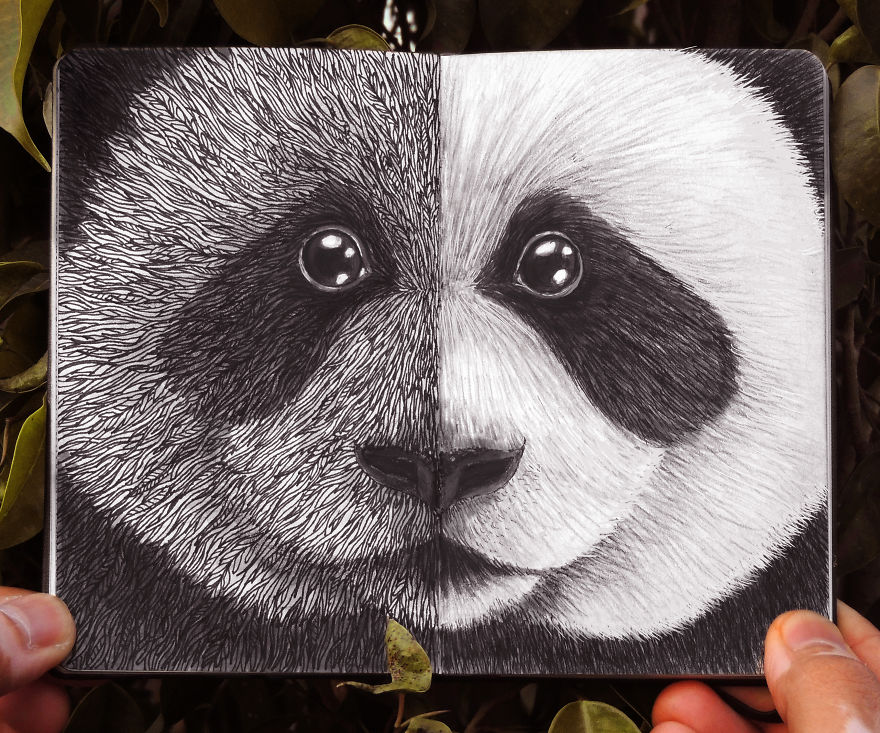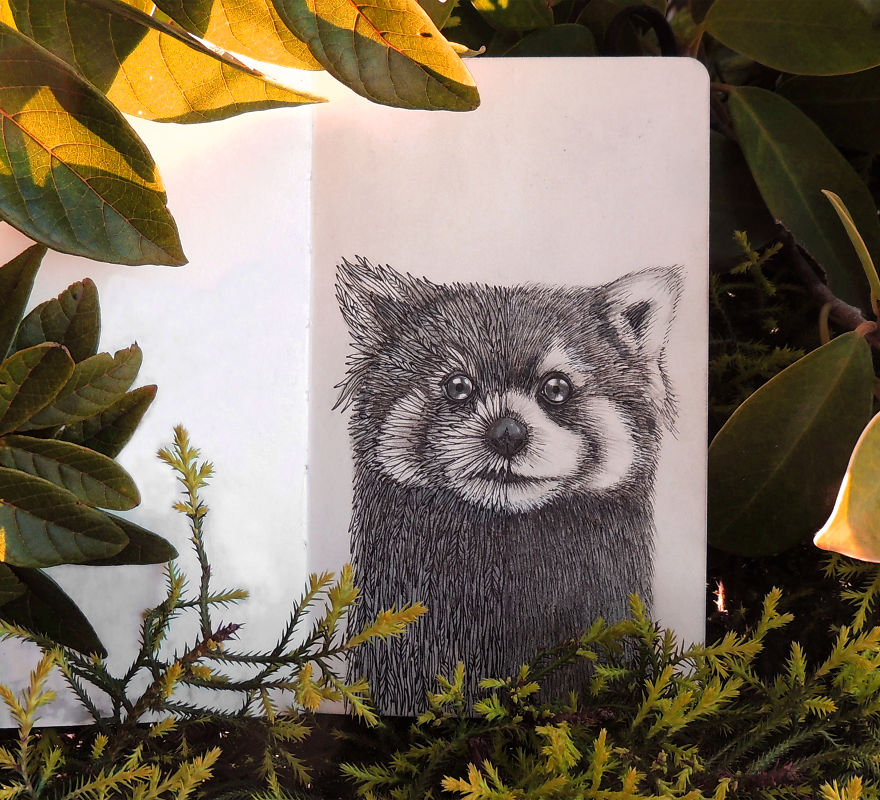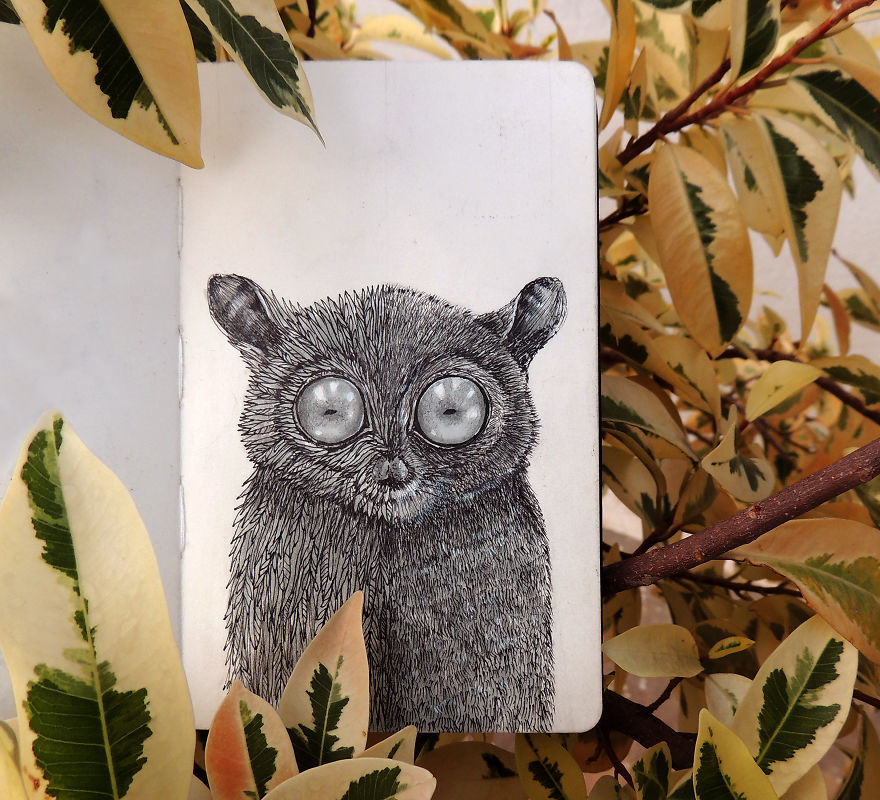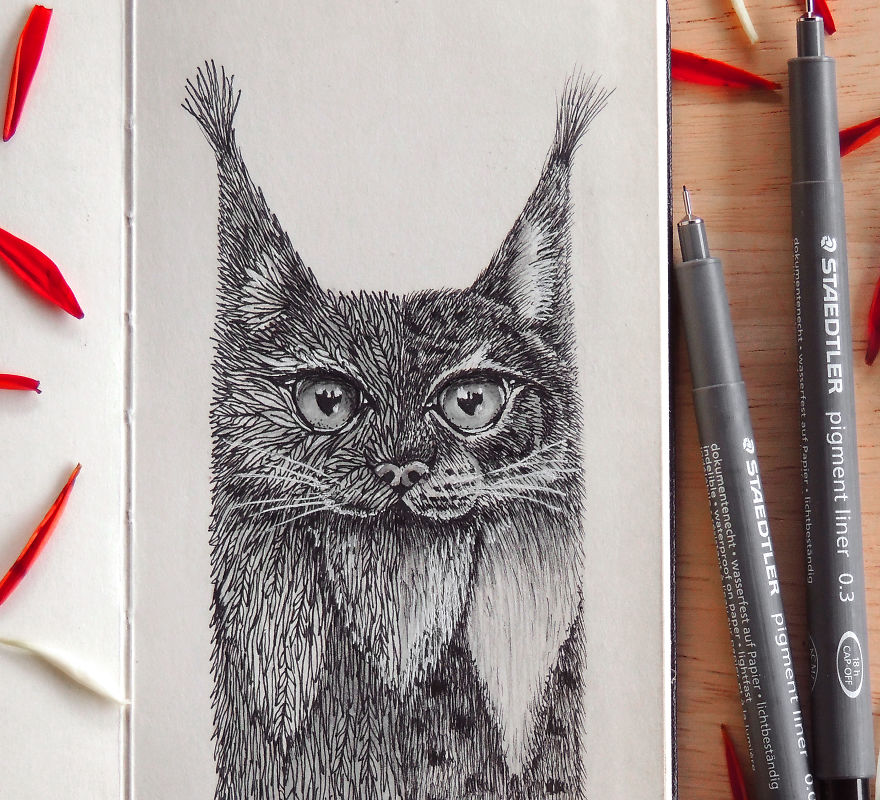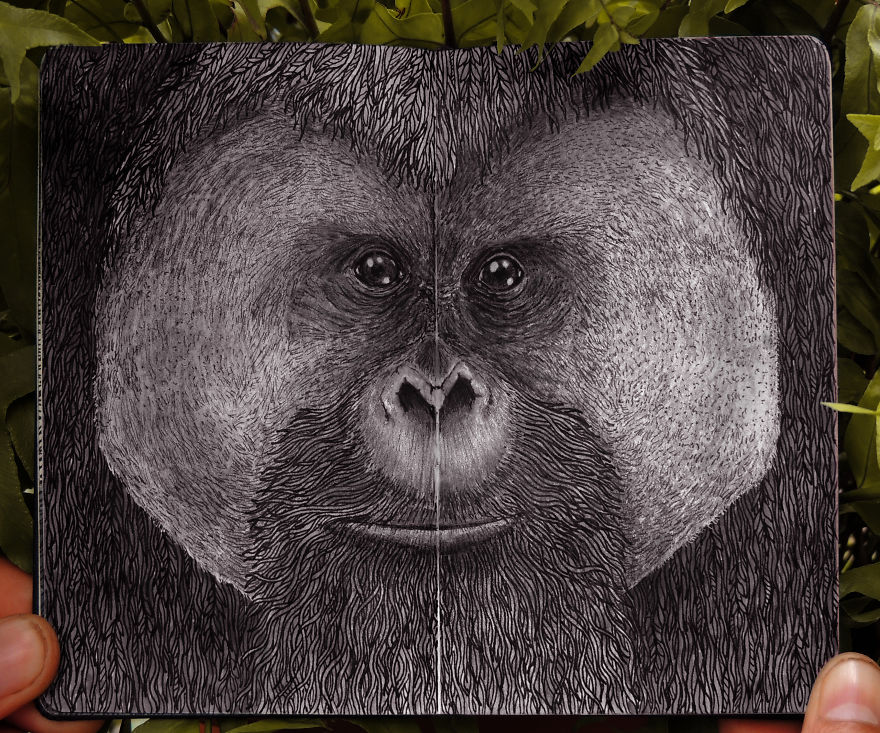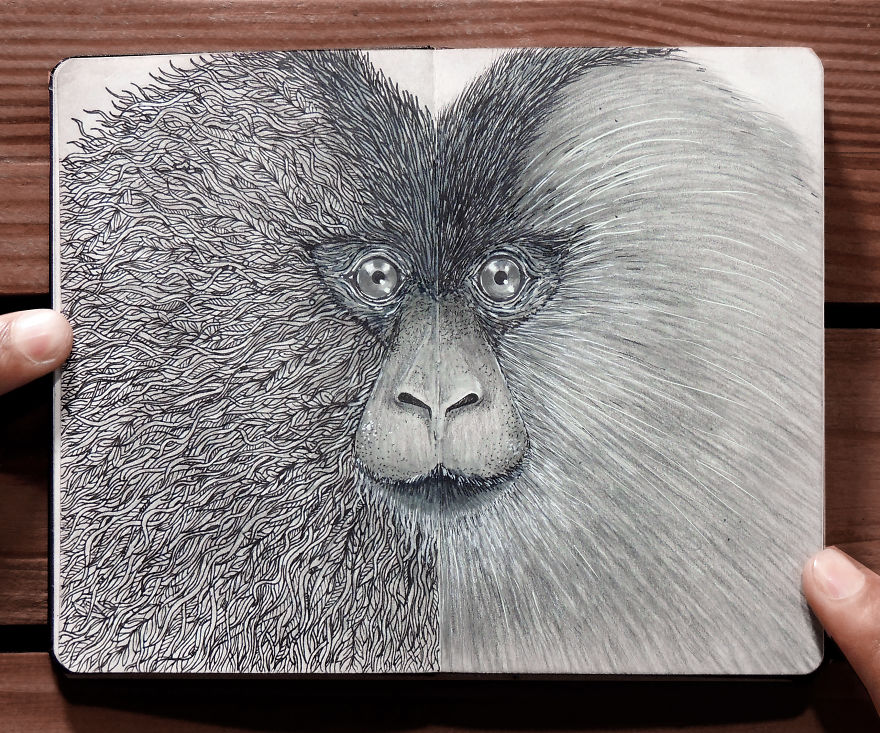Nature belongs to everyone. Don't take it away from them. So here is my Inktober 2017. Along each post, I have given some information about these beautiful yet endangered species. Please do read it out and hope you will like the project.
I sketched these using pens, pencils and also few markers.
More info: behance.net
This post may include affiliate links.
Pygmy Three-Toed Sloth
The pygmy three-toed sloth, also known as the monk sloth or dwarf sloth, are found on a small island off the coast of Panama. This sloth, like other sloths, is arboreal (tree-living) and feeds on leaves. It is symbiotically associated with green algae, that can provide it with a camouflage. The IUCN lists the pygmy three-toed sloth as critically endangered. Threats to the sloth's survival include timber harvesting and human settlement, that might lead to habitat degradation.
Slender Loris
The Slender loris, is a nocturnal primate. They are subdivided into two known species, namely red slender loris and grey slender loris. The red slender loris found in Sri Lanka, are classified as Endangered by the IUCN, it is declining because its forest habitat is being destroyed for logging, agriculture and development. Other threats include: electrocution on live wires, road accidents and the pet trade.
Education, education, EDUCATION! If people knew how many of these poor animals die just during transport via the black market, maybe they wouldnt contribute to the poaching by purchasing them as pets!
Panda
This peaceful creature with distinctive black and white coat is adored by the world and considered a national treasure in China. Despite their exalted status and relative lack of natural predators, pandas are still at risk.
Red Pandas
Red Pandas are such beautiful creatures. One of its kind. Sadly they are endangered due to deforestation.
Tarsiers
Tarsiers are nocturnal creatures. So beautiful and unique. They hunt by sight and sound and have the biggest eyes in the animal kingdom due to which they are difficult to rotate. But there is a joint between the base of their skull and spine which allows them to rotate their head 360 degrees, almost similar to owls. The majority of Tarsier species are now endangered or threatened, and some are designated critically endangered. Threats include habitat destruction and fragmentation, hunting, agricultural pollutants and human disturbance. Tarsiers are very shy animals that prefer to stay away from human contact.
Iberian Lynx
The Iberian lynx is the world's most threatened species of cat. They are classified as Critically Endangered (CR).
Bat
The International Union for the Conservation of Nature (IUCN) lists 26 bat species as Critically Endangered, meaning they face an imminent risk of extinction. Fifty-one others are Endangered, and 954 bat species are considered Vulnerable. Bats also are among the most under-studied of mammals. The IUCN lists 203 bat species as “Data Deficient”– there is simply too little information available to determine their conservation status, and over 150 newly described species have yet to be added to the IUCN Red List and have yet to be formally assessed.
A large variety of plants rely on bats for both pollinating AND spreading seeds. In the US, bats are also critical for insect control.
Orang-Utan
Orang-utan means 'man of the forest' in Malay language. They are the world's largest tree-climbing mammals. But their forest habitat in Indonesia and Malaysia is rapidly disappearing, putting the future of Asia's only great ape in peril. They are Critically Endangered (CR). Orang-utans are known as gardeners of the forest. They play a vital role in seed dispersal and in maintaining the health of the forest ecosystem, which is important for people and a host of other animals.
My favorite of ALL of the animals! If I were single and had no kids, I would be in Borneo NOW, helping raise orphans for release back to the wild!
Lion-Tailed Macaque
Lion-Tailed Macaque are so beautiful. I actually saw them once few years ago.
They live in the forested areas of the great Western Ghats, a mountain range in southwest India. Unfortunately these beautiful animals are endangered. The biggest threat they are facing is deforestation. Also in some areas, they are caught as pets and also hunted for food.
These are all very well done , &, are a good way to draw attention to animals that could face extinction without help of conscientious nature lovers. Thanks for calling attention to their plight !
These are true works of art. Absolutely beautiful. You are really talented and kind to use your immense talent to bring to light a very important message.
This is really adorable, I agree with you, they belong in the nature, not in zoos where they gotta live in small enclosures, but unfortunately for some endangered species zoos´re the only safe places, especially in countries like Germany that don´t have any sanctuary for exotic animals, we only have some for native wild animals and a reptile sanctuary close to Munich here...
Köszönet, Csak remélni tudom,hogy nem következik be a nagy ki halás
These are all very well done , &, are a good way to draw attention to animals that could face extinction without help of conscientious nature lovers. Thanks for calling attention to their plight !
These are true works of art. Absolutely beautiful. You are really talented and kind to use your immense talent to bring to light a very important message.
This is really adorable, I agree with you, they belong in the nature, not in zoos where they gotta live in small enclosures, but unfortunately for some endangered species zoos´re the only safe places, especially in countries like Germany that don´t have any sanctuary for exotic animals, we only have some for native wild animals and a reptile sanctuary close to Munich here...
Köszönet, Csak remélni tudom,hogy nem következik be a nagy ki halás

 Dark Mode
Dark Mode 

 No fees, cancel anytime
No fees, cancel anytime 




